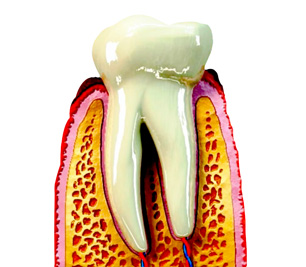Fluoride
| EPA Maximum Contaminant Level (MCL) |
4 mg/L |

Fluoride is added to many municipal water supplies to promote dental health.
Fluoride is a reduced form of the element fluorine, one of the most reactive of all elements. Fluorides are found at some level in all natural waters, in sea water, aquifers with low calcium content and areas rich with fluoride-bearing minerals.
Fluoride is added to water in many communities as a method of promoting dental health.
Health Effects of Fluoride
Fluoride is widely believed to be dentally beneficial at low levels, but excessive amounts can lead to fluorosis, a condition which can range from a moderate mottling of tooth enamel to crippling bone disease. According to the EPA:
Exposure to excessive consumption of fluoride over a lifetime may lead to increased likelihood of bone fractures in adults, and may result in effects on bone leading to pain and tenderness.
The World Health Organization reports that although some workers occupationally exposed to large amounts of fluoride have experienced an “increased incidence of, and mortality from, lung and bladder cancer and from cancers in other sites,” the carcinogenicity of fluoride remains uncertain. Workers exposed to fluoride are also exposed to other harmful chemicals that may be carcinogenic.
Water Treatment for Fluoride
The EPA recommends reverse osmosis and distillation. Another method involves filtration through a fluoride/arsenic reduction medium called activated alumina.
Source: EPA, WHO, Image: WikiMedia, author: D-institut
Site Index
Filtration Systems
- Aeration for Iron & Sulfide
- Backwashing Filters
(whole house & well units)
- Chlorine & Chemical Injectors
- Countertop Water Filters
- Garden Hose Filters
- Reverse Osmosis, Residential
- Reverse Osmosis, Commercial
- Shower Filters
- Specialty Filters
- Ultraviolet Systems
- Undersink Filters
- Water Softeners
- Whole House Filters
Cartridges
Parts
- Replacement Parts
- Faucets
- Filter Media
- Fittings
- Housings
- O-rings
- Pumps
- Pura UV
- R.O. Parts
- R.O. Tanks
- R.O. Booster Pump
- VIQUA UV